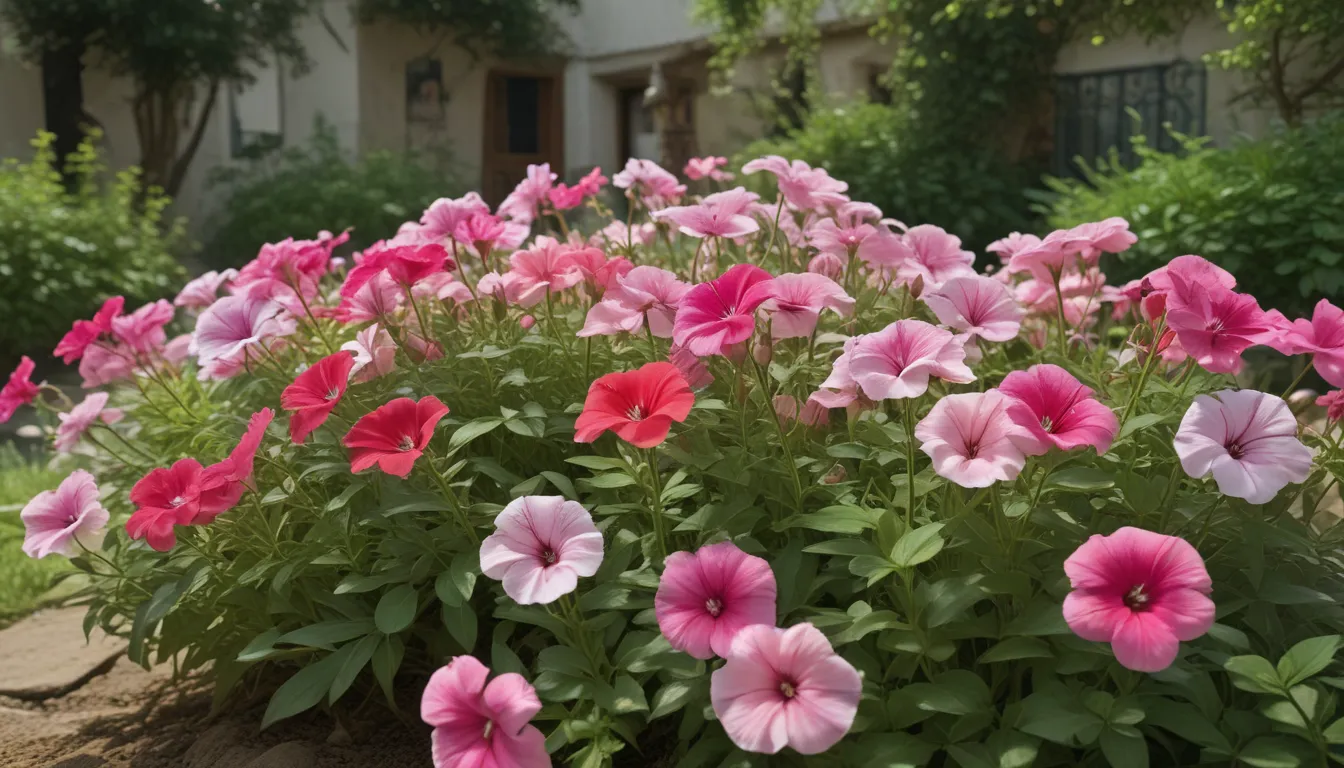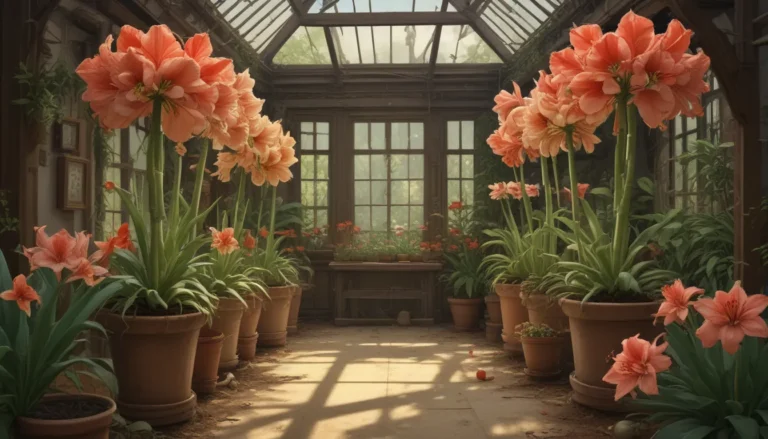Everything You Need to Know About Growing Mexican Petunias for a Heat and Shade Tolerant Perennial

Are you looking for a plant that thrives in the heat and shade, with beautiful purple flowers? Mexican petunias, also known as Ruellia simplex, might just be the plant for you. Loved by many gardeners for its tolerance to high temperatures and preference for shaded areas, this plant can add a pop of color to your garden.
In this article, we will explore everything you need to know about growing Mexican petunias in your garden. From cultivation and history to propagation, growing tips, pruning, and maintenance, we’ve got you covered. Let’s dive in and discover the beauty and benefits of this lovely plant!
What You’ll Learn
Here’s a glimpse of what you can expect to discover in this article:
- Cultivation and History
- Propagation
- How to Grow
- Growing Tips
- Pruning and Maintenance
- Cultivars to Select
- Managing Pests and Disease
- Best Uses
- Quick Reference Growing Guide
If you’re in Florida, you may want to skip ahead to the section on cultivars that are safe to grow in your region. Or, if you’re looking for other plants that thrive in the Sunshine State, consider exploring turmeric as an alternative.
Mexican petunias can be grown in both shade and full sun, making them versatile for various garden conditions. Additionally, the stem color of this plant can vary depending on the light it receives, with brighter light resulting in a more purple stem.
Cultivation and History
Native to Mexico and South America, Mexican petunias have a rich history and are also known by various aliases such as Britton’s wild, Texas petunia, or Mexican bluebell. Despite its misleading name, this plant is not closely related to traditional petunias.
This perennial plant has naturalized in certain regions like Hawaii and parts of the southern United States, where it is appreciated for its beauty and ability to attract butterflies. However, it is essential to note that Mexican petunias are considered invasive in Florida, where they can outcompete native species.
Propagation
Mexican petunias can spread naturally through seeds and rhizomes, and they can also be propagated through purchased seeds, cuttings, or division.
From Seed
When sowing seeds, plant them in early spring after the danger of frost has passed. Space the seeds 12 inches apart, with one to two seeds per expected plant.
From Cuttings
To propagate through cuttings, take a healthy stem in springtime and prepare a pot with a perlite and peat moss mix. Ensure the cutting receives bright, indirect light and regular moisture until roots are established.
Division
For division, loosen the soil around the plant, and carefully separate the clumps to transplant them into new areas. Water thoroughly and continue to care for the transplants until they are well-established.
How to Grow
Mexican petunias are highly prized shade plants, though they can tolerate full sun in less harsh climates. Drought-tolerant and relatively low maintenance, these plants can thrive in various soil conditions and watering regimens.
Rich compost or native soil can support Mexican petunias, and fertilizing with a 10-10-10 (NPK) mixture in springtime can help boost growth. Additionally, deep watering immediately after transplanting is crucial for plant establishment.
Growing Tips
Here are a few tips to help you grow Mexican petunias successfully:
- Avoid planting in full sun if the heat is intense in your region
- Provide extra water after planting
- Plant in either sun or shade, depending on your garden conditions
Pruning and Maintenance
Regularly trim dead leaves and remove spent flowers for aesthetic purposes. Additionally, cutting off seed pods can help prevent unwanted spreading of seeds. If the plant grows too extensively, consider trimming it back to manage its growth.
Cultivars to Select
Several cultivars of Mexican petunias are available, each with unique flower colors and characteristics. Some popular cultivars include ‘Katie’s Dwarf,’ ‘Chi Chi,’ ‘Southern Star Pink,’ and ‘Southern Star White,’ each offering a distinct aesthetic appeal.
If you’re in Florida, consider the cultivar ‘Purple Showers,’ which is sterile and does not produce seeds, reducing the risk of invasive spread.
Managing Pests and Diseases
Fortunately, Mexican petunias are not highly susceptible to insect pests or diseases, making them a low-maintenance plant in the garden. However, if deer are common in your area, ensure your garden is protected from these herbivores to preserve your plants.
Best Uses
Mexican petunias are ideal for mass plantings, borders, and edging, adding color to shady areas of your garden. Their versatility in sun or shade makes them suitable for various garden designs, offering both aesthetic beauty and practical function.
Quick Reference Growing Guide
For a quick overview of growing Mexican petunias, refer to the following guide:
- Plant Type: Perennial
- Flower Color: Purple/violet
- Native to: Mexico and South America
- Maintenance: Minimal
- Hardiness (USDA Zone): 8-11 (marginally hardy in Zone 7 with protection)
- Tolerance: Drought
- Bloom Time: Spring, summer, fall
- Soil Type: Any
- Exposure: Sun or shade
- Soil pH: Any
- Time to Maturity: 1-2 months
- Soil Drainage: Well-draining
- Spacing: 12 inches
- Companion Planting: Lantana
- Height: 8-12 inches (dwarf type), 18-36 inches (tall type)
- Attracts: Butterflies (swallowtail, brush-footed, and milkweed) and hummingbirds
- Spread: 24-36 inches
- Family: Acanthaceae
- Water Needs: Moderate to low
- Genus: Ruellia
- Pests & Diseases: Spider mites
- Species: simplex
Purple Power
Despite its potential invasiveness in certain regions, Mexican petunias are a beautiful addition to gardens in the southern United States. With minimal maintenance requirements and stunning purple blooms, this plant can enhance the aesthetic appeal of any garden.
Whether you’re a fan of Mexican petunias or cautious about their spreading tendencies, these plants offer versatility and charm to any landscape. Share your experience with Mexican petunias in the comments below and let us know if you’re in the pro- or anti-ruellia camp!
For more tips on shade-loving plants or other garden favorites, explore our related guides on Salvia, full-sun flowering perennials, asparagus ferns, and coneflowers for additional gardening inspiration.





